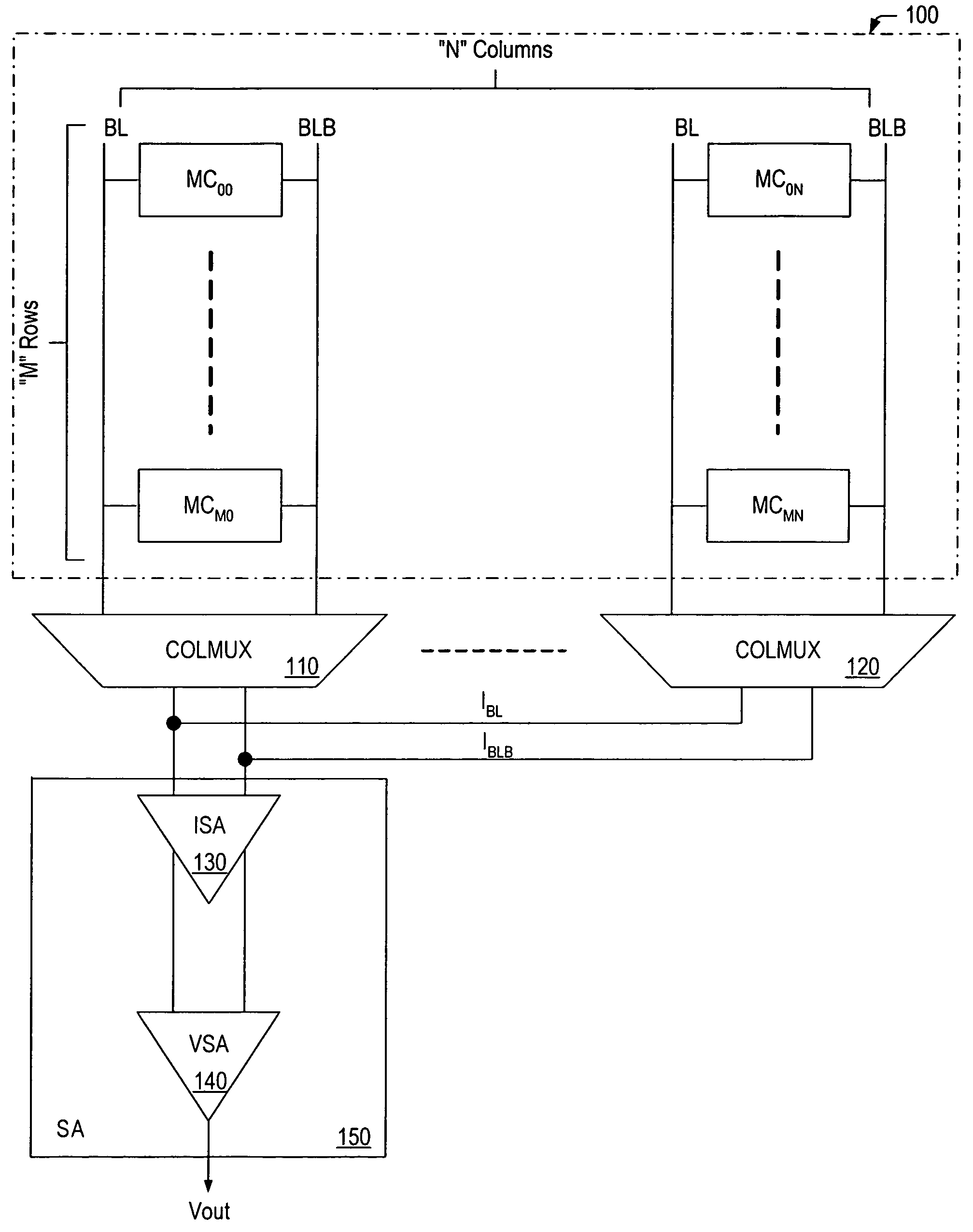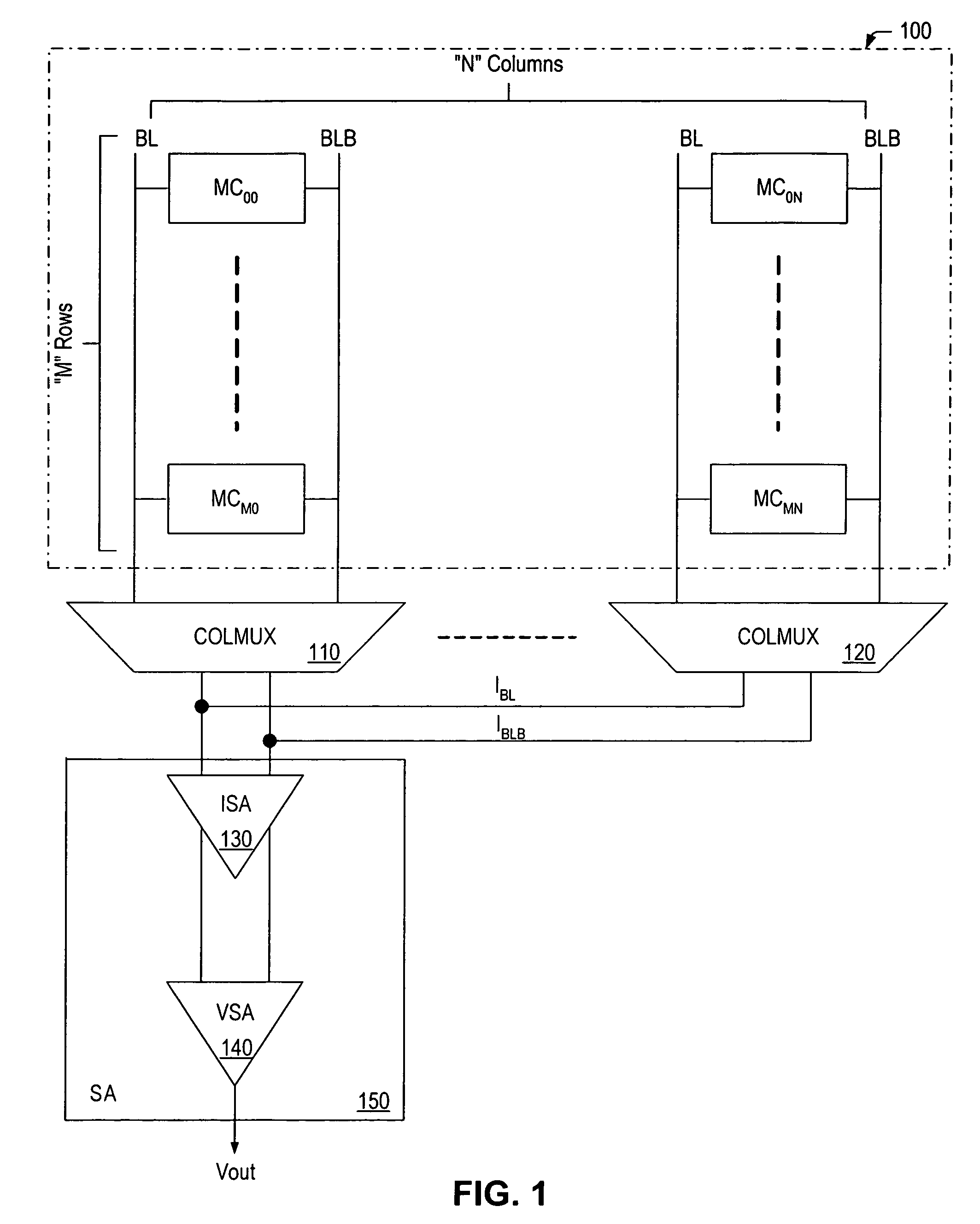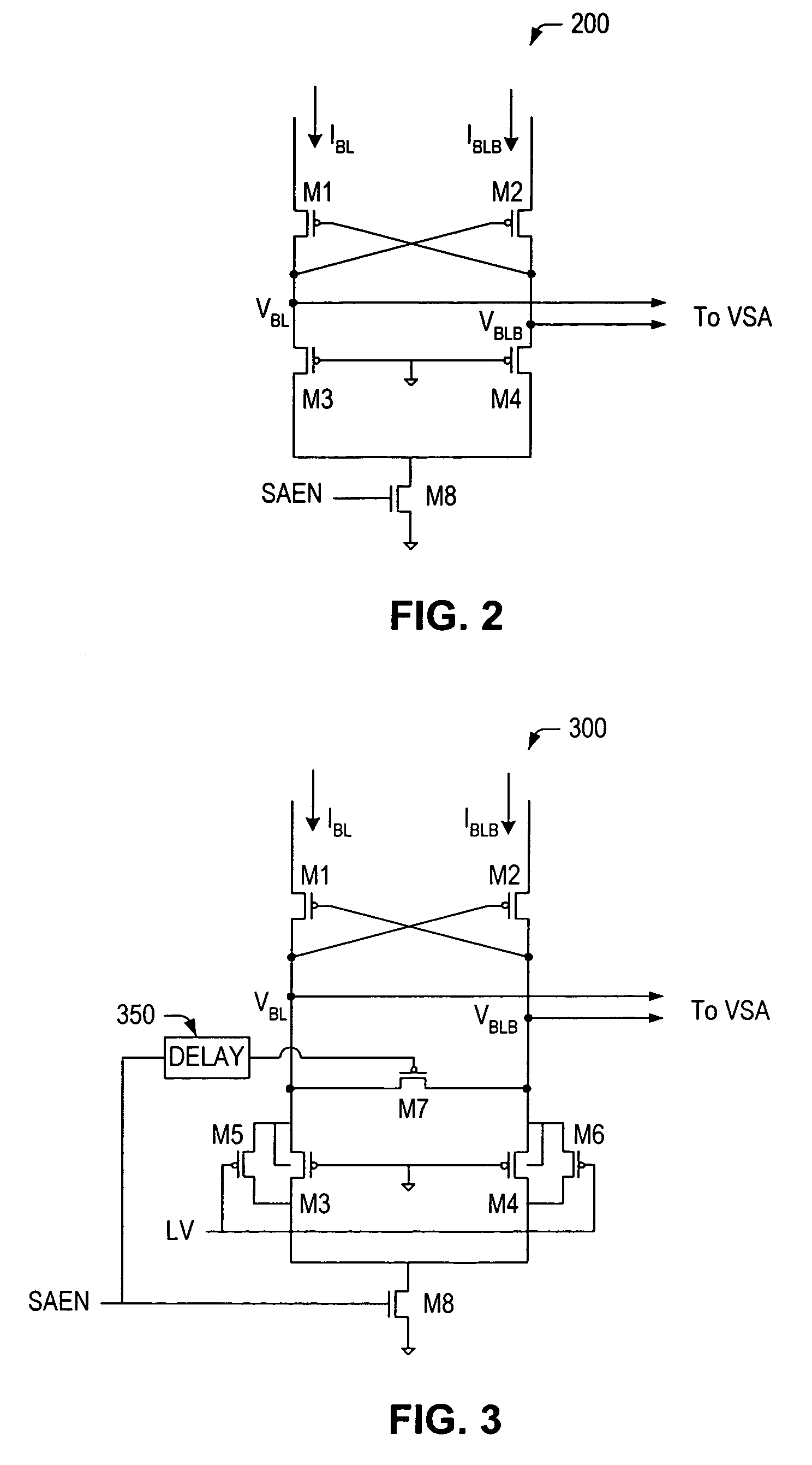Memory device, current sense amplifier, and method of operating the same
a current sense amplifier and memory device technology, applied in the field of current sense amplifier circuits, can solve the problems of large capacitance load of memory cells, excessive amount of time needed to read memory cells, and inability to provide enough cell current, etc., to achieve the effect of increasing circuit stability and speed, improving mismatch tolerance, and reducing the threshold voltage associated
- Summary
- Abstract
- Description
- Claims
- Application Information
AI Technical Summary
Benefits of technology
Problems solved by technology
Method used
Image
Examples
Embodiment Construction
[0033]One embodiment of an improved current sense amplifier 300 is described and shown in FIG. 3. The improved current sense amplifier is well suited for use in a memory device, and in one preferred application, may be used within a high speed dual-port static RAM (SRAM) device. However, it is noted that the inventive concepts described herein are not limited to a particular memory device, and instead, may be applied to various types of memory (including, but not limited to, types of ROM, RAM, and FLASH memories), as well as other applications (such as programmable arrays).
[0034]As noted above, even symmetrical sense amp designs may suffer the effects of transistor mismatch during the initial stages of a sense cycle. Transistor mismatch becomes more of a problem as transistor sizes decrease and / or the size of memory arrays increase. For example, a typical memory device may exhibit up to + / −3 sigma (standard deviations) of transistor mismatch due, in part, to the high volume of memor...
PUM
 Login to View More
Login to View More Abstract
Description
Claims
Application Information
 Login to View More
Login to View More - R&D
- Intellectual Property
- Life Sciences
- Materials
- Tech Scout
- Unparalleled Data Quality
- Higher Quality Content
- 60% Fewer Hallucinations
Browse by: Latest US Patents, China's latest patents, Technical Efficacy Thesaurus, Application Domain, Technology Topic, Popular Technical Reports.
© 2025 PatSnap. All rights reserved.Legal|Privacy policy|Modern Slavery Act Transparency Statement|Sitemap|About US| Contact US: help@patsnap.com



